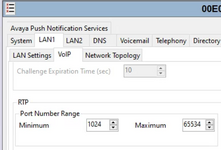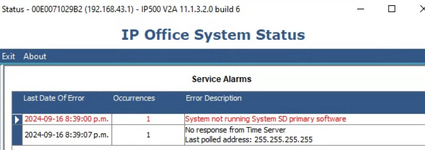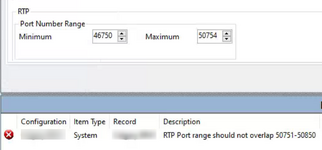Folks, really need your help here.
I’m facing a major and unbelievable problem where non-mergeable SIP Trunk changes corrupts the SD card and cause it to throw “System not running system SD primary software”. I’ve done a lot of testing hoping there was a chance of resolving on my own, but also wanted to gather as much info before asking for help. This error has been reproduced on 3x different systems (with one live for 5 years and no issues), see ‘story’ and table below.
The basic gist is it’s happening on V2 and V2A cabinets on different R11 release (11.0.4, 11.1.2 & 11.1.3). Recreating the SD card clears the error, until another non-mergeable change is made. Different computers (Windows 10 and 11) with different SD card readers were tried with the various Manager versions used in recreating the card. One system’s SD card that was running for 5 years was not removed from the cabinet
FULL STORY
The first system (call it CU-A) which I’m trying to ready for a new branch is an IP500 V2A PC02 at R11.1.3.2 with the blasted high pitch whine issue . It was running fine for a few weeks until I started to make SIP trunk changes which weren’t registering. After a non-mergeable change, the unit rebooted for 15 minutes and returned the dreaded ‘System not running system SD primary’.
Thinking it was the control unit or SD card, I tried registering the SIP trunks on a remote live system that was running off of the same ISP that was providing the SIP trunks since their ITSP domain IP wasn’t resolving unless it was on their network. This remote system (call it CU-B) is an IP500 V2 and has been operating live for 5 years on R11.0.4.7 . The SIP trunks registered with inbound calls (to an AA) and outbound (forwarding call from analog trunk to SIP trunk to cell) tested successfully. However I couldn’t get external call forwarding to work purely off of the SIP trunks so I made additional changes to troubleshoot which eventually caused the same SD card error. I couldn’t believe it, especially on a live system and my @$$ was on the line. Fortunately, the system was still running (my guess it was off the NVRAM config) and no one at the branch was the wiser the next day. I managed to ship an SD card reader same day and got someone to pop out the card, install R11.1.3.1.0 on a local machine at the branch and recreate the SD card. Knock on wood, they been running for over a week now (yes, that’s how long I’ve been banging my head with this).
CU-B changes for the remote site were done thru another PC (the one used to manage the IPO for all our branches). I had updated the manager application to 11.1.3.3 (July 2024 release) and was the same release I was managing CU-A. So my first thought was there was major bug with the latest release. The other consideration was maybe SD cards were old (2016 and 2018) and maybe co-incidentally they both failed.
So I got a third V2A control unit (call it CU-C) at PCS04 (no whine) with a brand new SD card PCS 22 (watermarked July 2022). After making SIP trunk configuration non-mergeable reboot changes, same thing happened ‘System not running system SD primary software’. NOTE, this unit was not connected to any network, except the management PC at 192.168.43.1 via the WAN port. Just in case there was some malicious traffic coming from the provider’s SBC IP. Also, I take care to change all default passwords on user extension accounts (RemoteManager), disable Administrator, EnchTcpaService (until needed), etc and restrict IP Routes to only the provider’s SBC and DNS.
This is getting really long, so gonna go point form…
Computers with clean OS re-install, AV and firewall disabled during SD card recreate and manager changes, smartscreen off (Avaya don’t like signing their software), no bitlocker…
DTE port readouts show the below just before it goes into long 15 minute reboot cycle and then shows the SD card error:
Creating SIP Trunk SIP Line (17) with proxy: ***BLANKED OUT***
SNMP::SNMP Server is disabled
.WATCHDOG TIMEOUT wdogmax 249990000l StartUp stack f07f35e8 f07f3700 f07f48a0 f02ab7b4 f02ac8bc f005c3bc f009d1d0 f001482c f0097d70 f0280cdc f0280c90 IP 500 V2A 11.1.2.4.0 build 18
Other notable readouts are:
System Primary is INVALID
However the below shows after first reboot of the system, but functioning normally
SMXFS: Check bad cluster replacement 0x3B280
SMXFS: Already marked as a bad cluster 0x3B280
ASBC. Second Watermark is Invalid
Valid Second Watermark
CHKDSK shows no bad sectors just after format/recreate from manager but then will show “32 KB in bad sectors” after inserting in control unit and changing from BASIC to STANDARD mode.
I’ve got more and will post as requested.
I searched for this issue as best as I could and would have thought I’d come across this given this has affected 3x control units, one running fine for 5 years...
No change thru manager should ever corrupt the SD card. This is insane.
I’m facing a major and unbelievable problem where non-mergeable SIP Trunk changes corrupts the SD card and cause it to throw “System not running system SD primary software”. I’ve done a lot of testing hoping there was a chance of resolving on my own, but also wanted to gather as much info before asking for help. This error has been reproduced on 3x different systems (with one live for 5 years and no issues), see ‘story’ and table below.
The basic gist is it’s happening on V2 and V2A cabinets on different R11 release (11.0.4, 11.1.2 & 11.1.3). Recreating the SD card clears the error, until another non-mergeable change is made. Different computers (Windows 10 and 11) with different SD card readers were tried with the various Manager versions used in recreating the card. One system’s SD card that was running for 5 years was not removed from the cabinet
| Control Unit Name | Control Unit Version | Software Ver Originally Installed | Software Ver Changed | SD Card | Notes |
| CU-A | IP 500 V2A PCS-02 | 11.1.3.2.0_Build_6 | 11.1.3.1.0 build 34 | Micron 8GB October 2016 -PCS18 | New system, locally configured |
| CU-B | IP 500 V2 | 11.0.4.7.0 Build 6 | 11.1.3.1.0 build 34 | Micron 8GB July 2018 | Live system running since 2019, remote city |
| CU-C | IP 500 V2A PCS-04 | 11.1.3.0.0 Build.23 | 11.1.2.4.0 Build 18 | SanDisk 8GB July 2022 - PCS22 | New system, locally configured |
FULL STORY
The first system (call it CU-A) which I’m trying to ready for a new branch is an IP500 V2A PC02 at R11.1.3.2 with the blasted high pitch whine issue . It was running fine for a few weeks until I started to make SIP trunk changes which weren’t registering. After a non-mergeable change, the unit rebooted for 15 minutes and returned the dreaded ‘System not running system SD primary’.
Thinking it was the control unit or SD card, I tried registering the SIP trunks on a remote live system that was running off of the same ISP that was providing the SIP trunks since their ITSP domain IP wasn’t resolving unless it was on their network. This remote system (call it CU-B) is an IP500 V2 and has been operating live for 5 years on R11.0.4.7 . The SIP trunks registered with inbound calls (to an AA) and outbound (forwarding call from analog trunk to SIP trunk to cell) tested successfully. However I couldn’t get external call forwarding to work purely off of the SIP trunks so I made additional changes to troubleshoot which eventually caused the same SD card error. I couldn’t believe it, especially on a live system and my @$$ was on the line. Fortunately, the system was still running (my guess it was off the NVRAM config) and no one at the branch was the wiser the next day. I managed to ship an SD card reader same day and got someone to pop out the card, install R11.1.3.1.0 on a local machine at the branch and recreate the SD card. Knock on wood, they been running for over a week now (yes, that’s how long I’ve been banging my head with this).
CU-B changes for the remote site were done thru another PC (the one used to manage the IPO for all our branches). I had updated the manager application to 11.1.3.3 (July 2024 release) and was the same release I was managing CU-A. So my first thought was there was major bug with the latest release. The other consideration was maybe SD cards were old (2016 and 2018) and maybe co-incidentally they both failed.
So I got a third V2A control unit (call it CU-C) at PCS04 (no whine) with a brand new SD card PCS 22 (watermarked July 2022). After making SIP trunk configuration non-mergeable reboot changes, same thing happened ‘System not running system SD primary software’. NOTE, this unit was not connected to any network, except the management PC at 192.168.43.1 via the WAN port. Just in case there was some malicious traffic coming from the provider’s SBC IP. Also, I take care to change all default passwords on user extension accounts (RemoteManager), disable Administrator, EnchTcpaService (until needed), etc and restrict IP Routes to only the provider’s SBC and DNS.
This is getting really long, so gonna go point form…
Computers with clean OS re-install, AV and firewall disabled during SD card recreate and manager changes, smartscreen off (Avaya don’t like signing their software), no bitlocker…
DTE port readouts show the below just before it goes into long 15 minute reboot cycle and then shows the SD card error:
Creating SIP Trunk SIP Line (17) with proxy: ***BLANKED OUT***
SNMP::SNMP Server is disabled
.WATCHDOG TIMEOUT wdogmax 249990000l StartUp stack f07f35e8 f07f3700 f07f48a0 f02ab7b4 f02ac8bc f005c3bc f009d1d0 f001482c f0097d70 f0280cdc f0280c90 IP 500 V2A 11.1.2.4.0 build 18
Other notable readouts are:
System Primary is INVALID
However the below shows after first reboot of the system, but functioning normally
SMXFS: Check bad cluster replacement 0x3B280
SMXFS: Already marked as a bad cluster 0x3B280
ASBC. Second Watermark is Invalid
Valid Second Watermark
CHKDSK shows no bad sectors just after format/recreate from manager but then will show “32 KB in bad sectors” after inserting in control unit and changing from BASIC to STANDARD mode.
I’ve got more and will post as requested.
I searched for this issue as best as I could and would have thought I’d come across this given this has affected 3x control units, one running fine for 5 years...
No change thru manager should ever corrupt the SD card. This is insane.





